Producers
-
Description:
Domaine de Cornillac is a fourth generation family-owned winery with 9.5 hectares in the town of Saint Vérand in the south of Beaujolais. The soil is a complex mix of clay, schist, sand, and plagiogranite. The vines are on hillsides at 400 meters altitude which brings freshness to the wine. This qualitative terroir gives wines with ample body and length. Schist has pockets of clay, layered with other minerals compressed into thin layers. The clay gives the wines depth and creates a reservoir of water, helping out the vines in dry periods. The plagiogranite layers give minerality, tension, and length to the wine. The plagiogranite is very similar to the blue granite found in the Côte de Brouilly. The decomposed granite gives dry extract to the wines, which translates to how the wine hangs on the palate.
The grapes are hand-harvested. Whole clusters are kept depending on the maturity of the stems. Temperature controlled tanks are used to manage the speed of the alcoholic fermentation. Pump-overs happen daily to break the cap and punch downs are used depending on the vintage.
Domaine de Cornillac is certified sustainable by HVE (Haute Valeur Ecologique), which takes into consideration the ecological infrastructure not only of the vineyards, but everything touching the vineyards – forests, hedges, etc. Cover crops are used to restore land where the vines have been removed. The core ethos is that natural habitats of flora and fauna are respected.Image: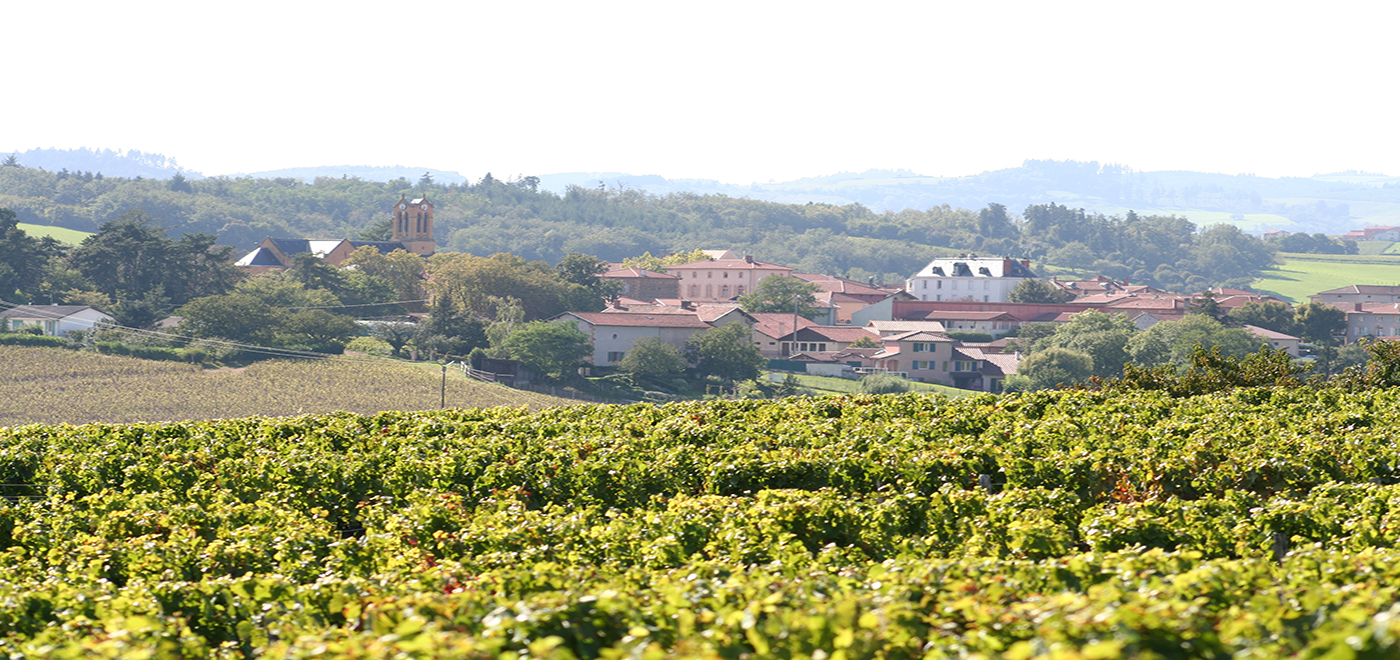 Region:
Region: -
Description:
Reinhard Brundig, a successful film producer from Germany, founded Domaine de Courbissac in 2002. What drew him to this property located in the La Livinière sub-zone of Minervois was three-fold: established and well-tended vines, the complexity of the soils, and the proximity to La Montagne Noire. At the heart of Domaine de Courbissac are 90-year-old Grenache, 70-year-old Carignan, and 70-year-old Cinsault, as well as some solidly middle-aged Syrah and Mourvedre around 40 years-old. Farmed biodynamically since 2002, Reinhard has expanded the size of the vineyards, now totaling 30 hectares, by planting some additional Syrah, Grenache, and Mourvèdre.
At the end of 2013, Reinhard partnered with the talented Brunnhilde Claux, a young vigneronne with an impressive resumé. Brunnhilde got her start at Domaine Gauby, where she learned how to handle the natural exuberance of grapes grown in the generous Mediterranean climate. From there, she moved on to Terroir al Limit in the Priorat, where she worked with Dominik Huber for three vintages before Reinhard tapped her to lead Domaine de Courbissac.
With her training and experience making wines at Domaine Gauby and Terroir al Limit, Brunnhilde takes a decidedly hands-off approach at Domaine de Courbissac. She has continued the biodynamic farming practices instituted in 2002, and she harvests each plot and variety separately and manually. The grapes are transported in small bins where they are sorted at the winery. The younger vine fruit is usually destemmed, while older vine fruit is left mostly intact. Fermentations are in concrete vats and well-seasoned, open-top wooden fermenters. If Brunnhilde is fermenting with whole clusters, she will gently layer the fruit in the vat and by foot, press out any air between the bunches. This process releases a small amount of juice, and once the vat is full, she covers it and leaves it to ferment with the natural yeasts present on the grape skins. After 9-12 days of maceration, she presses the wine. Fermentation finishes in the respective aging vessels– mainly 40hl foudres. Unless necessary, SO2 is not used until right before bottling.
This profile, including all tasting notes and photos, was edited from the European Cellars website. For more information please visit: European Cellars.
Image: Region:
Region: -
Description:
In 2013, Gregory Barbet was looking for a house in Beaujolais. Gregory's father, Xavier Barbet, helped with the search and called Gregory one day, saying that he found a beautiful house in Saint-Amour and that he should take a look. There was a catch: the house included a winery that was originally founded in the 1600's and fifteen hectares of vines, all in Saint-Amour. Gregory admits that knowing the amount of work that the winery and vineyards would require, he was a bit intimidated by the project, but in the end, the opportunity was too good to pass up. The family who previously owned Domaine de la Pirolette lived in Lyon and used to sell the wine in bulk. It was a special opportunity for Barbet because the vineyards are in choice parcels on the top of the hill, with little topsoil and the average vine age is 65 years-old. It's also an old winery, that needed work, but a beautiful space to make wine.
Saint-Amour, although it is one of the smallest crus in Beaujolais, has the most diverse terroir. You find blue volcanic schist, granite, pink granite, clay, alluvial fans, and also sandstone from the time that Burgundy was under water. Pirolette has twelve different parcels in three main soil types. Barbet quickly took to converting the vineyards to organic viticulture, not using any herbicides, and in 2019, the vineyards are certified HVE or Haute Valeur Environmentale. They have big parcels in each soil type, so they are lucky to be able to vinify nearly everything by parcel. Some parcels are located on pink granite, which is typically found in Fleurie or Brouilly. This terroir gives wines with fruit and energy. Some parcels are located on blue volcanic soils, similar to the Côte du Py or Côte de Brouilly. Blue volcanic soil gives powerful wines. And some parcels are located on clay with flint which gives peppery notes to the wines.
Winemaking is traditional. The wines are fermented in cement with 50% whole cluster and are very gently extracted using the chapeau grillé method, which simply means keeping the cap submerged with a grate, infusing the skins with the fermenting juice. (Think of this like steeping tea, with the bag in the hot water, letting the flavor come out naturally, versus squeezing the bag, which will make your tea more tannic, the equivalent of punching down in wine.) After fermentation, the classic wine is aged for nine months in stainless steel. Eventually, they are hoping to purchase some large foudres for aging. To eccentuate the special terroirs of Saint-Amour, Barbet is bottling two very special and limited production single-vineyard wines from two parcels, La Poulette and Le Carjot, which are aged in cement eggs and barrels. Each wines has great purity of fruit and really showcases the diverse terroir of Saint-Amour.
BOWLER E-Zine Issue 3 | July 2021: Saint-Amour from Top to Bottom with Gregory Barbet
Image: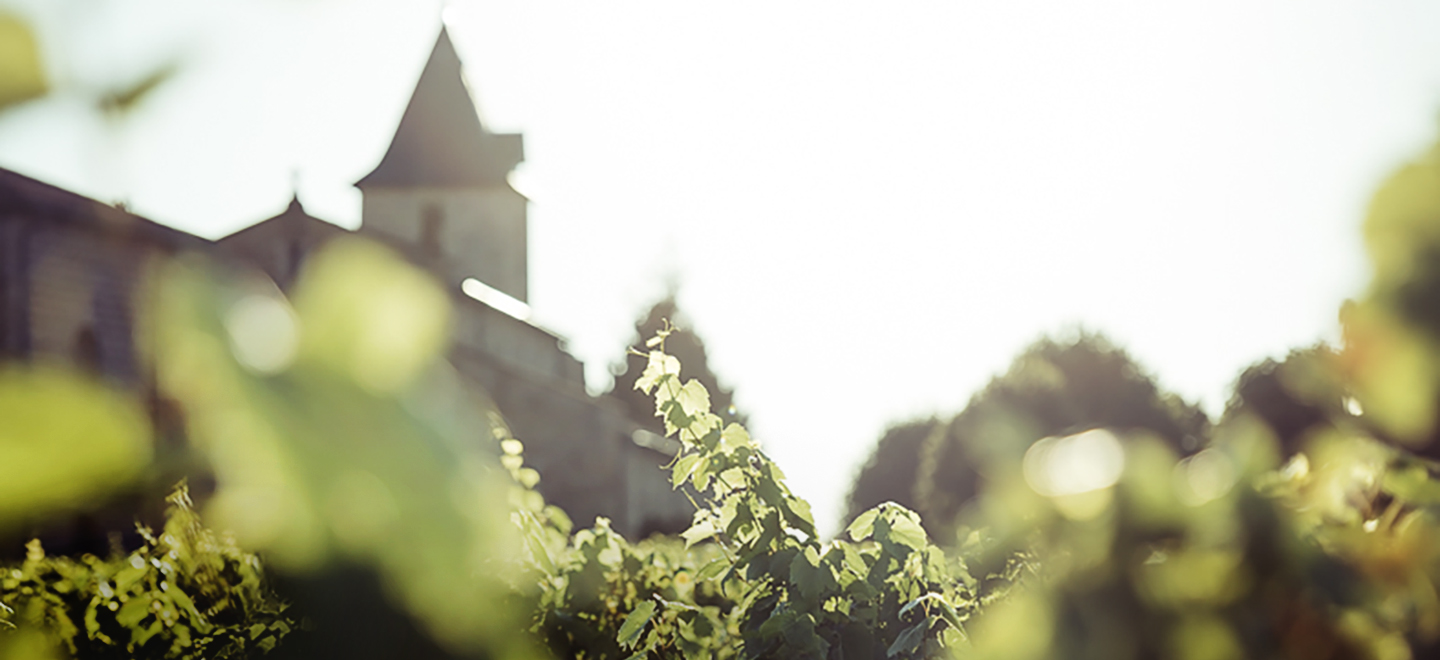 Region:
Region: -
Description:
Domaine de la Rochette has been in Vincent Leclair's family for four generations. Upon taking over the fifty hectares of vines from his father in 2014, Leclair made some changes in the vineyard management. He kept grass in the rows and stopped using insecticides, instead opting for sexual confusion horomones. He invested in new tractors that are much more precise in their applications and it allowed him to reduce his treatments by 50%. Although he likes the idea of organic farming, it's very challenging because Touraine gets a lot of rain and there is mildew pressure. For his plots in the Chenonceaux vineyard, he is organic. Treatments for mildew in the other vineyards are done as sparingly as possible and the winery is certified sustainable with HVE3.
The domaine is located in Pouillé, a small wine village on the Cher River in the heart of the Loire Valley. The vineyards are located on the slopes of the Cher river and benefit from a semi-continental climate on multiple terroirs and “perruche” (made of clay with flint, silica and gravel). He also has some vineyards on the plateau which has more clay. Most of the parcels, especially for the Sauvignon, are in the “première Côtes” with a beautiful exposure and and rather steep slopes, perfect for natural drainage.
Leclair only works with fruit from his own vineyards. He makes an assortment of wines ranging from Gamay, Pinot Noir, Pineau d'Aunis and sparking Chenin Blanc. The majority of his vines are Sauvignon Blanc, representing twenty of the fifty hectares. Domaine de la Rochette was also one of the first twelve wineries making wine in the new Chenonceaux appellation, established in 2011. In the cellar, Leclair works with a pneumatic press and temperature controlled stainless steel tanks, allowing him to make transparent wines that showcase the terroir.
When we met with Leclair in 2018, we had the chance to discuss the the reason that Touraine Sauvignon is such a different expression compared to Sancerre, 85 miles east of Pouillé. First, of course, the soil is different, with Kimmeridgian limestone and clay soils in Sancerre. The climate is also different, Touraine tends to be warmer by a few degrees. Yields are smaller in Touraine. The legal limit is 50hl/ha in Touraine compared to 65hl/ha in Sancerre. And Leclair said that they tend to harvest later in Touraine compared to Sancerre where they do not want to take the risk of bad weather with a later harvest. Sauvignon from Touraine has softer edges, less aggressive aromatics, ample fruit that is balanced with minerality. The Touraine Sauvignon from Rochette is a wonderful example of the best that Touraine has to offer and the Chenonceaux is not to be missed!
Image:Region: -
Description:
Domaine des Billards owns five hectares, all in Saint Amour. It’s one of the original Loron wineries and has belonged to the Barbet and Teissier families for more than 200 years. Saint Amour is one of the smallest crus with 321 hectares under vine and it also happens to have one of the most diverse soils of all of the cru. You find blue volcanic schist, granite, pink granite, clay, alluvial fans, and also sandstone from the time that Burgundy was under water. Billards’ five hectares start mid-slope and are composed of sandstone pebbles, granite outcroppings, and layers of clay. Farming is traditional and natural, with no use of herbicides. The soil is regularly ploughed to develop biodiversity.
In the cellar, the vinification is semi-carbonic and lasts between 12 to 15 days. A weighted grill keeps the cap submerged in the fermenting juice, which gives a very gentle extraction of tannins. The wines are aged in cement tanks.
Pictured right - Xavier Barbet has an ancient parchment accounting book that recorded of a number of prestigious customers in Paris in the 18th Century, among them a sale in 1774 (before the French Revolution!) of ten barrels to Marquis Turgot, Louis XVI’s Finance Minister.
Image: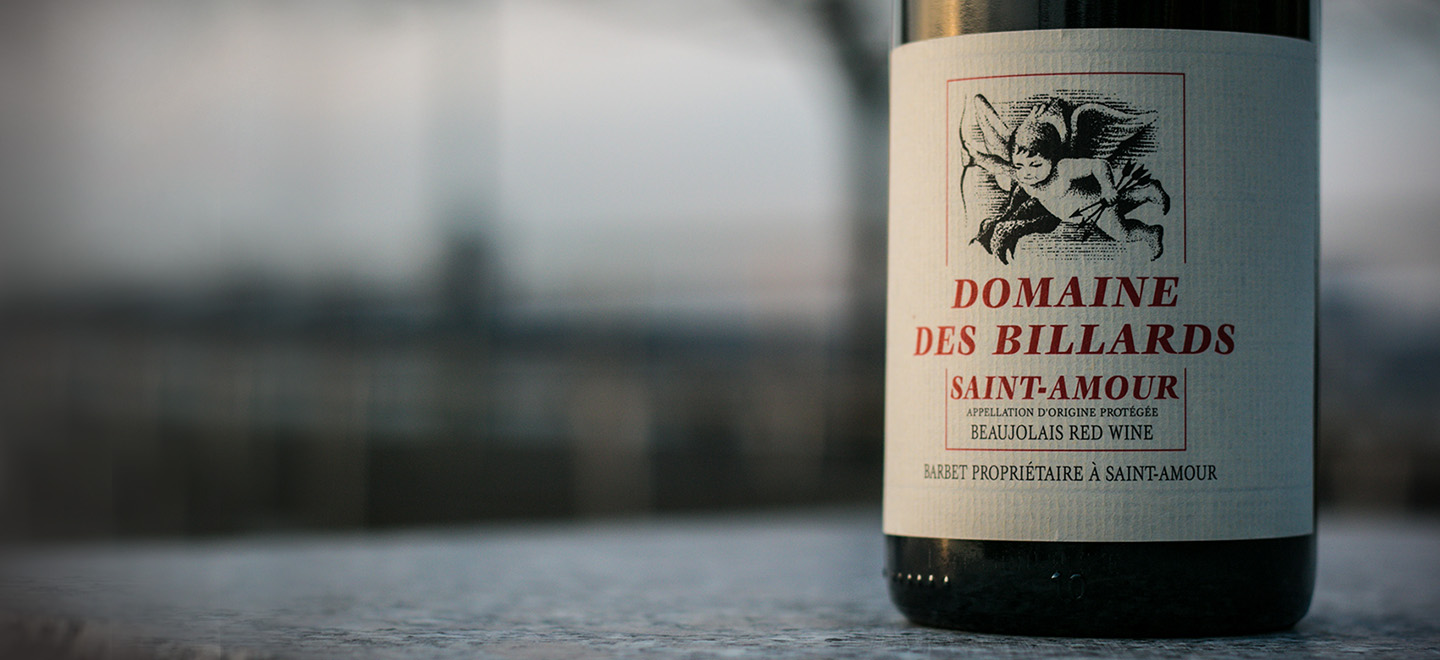 Region:
Region: -
Description:
Côte de Brouilly has a special terroir: “blue” granite is laced with volcanic porphyry, or crystallized mineral deposits. This mixture, combined with the elevation (AOC Côte de Brouilly is confined to the upper vineyards; AOC Brouilly is lower, and far larger), largely accounts for Côte de Brouilly’s highly scented and finely—fine is the adjective that comes to mind—concentrated wines. Winemaking at Chavannes is traditional and simple, with little extraction in the modern sense (Pavillon’s wine could well be labeled the antithesis of modern extracted power). The alcoholic fermentation is done in cement vats, after which the wine goes into foudre for aging. The link to Thivin: Pavillon de Chavannes was acquired by the Jambon-Chanrion family in 1861. Its history became intertwined with that of Château Thivin when Yvonne Chanrion married Claude Geoffray shortly after the First World War; Claude had inherited Thivin, then a small estate. Yvonne took with her one-third of her family’s highly regarded vineyards as an inheritance, and later she acquired her sister’s third as well. Over the years, Yvonne and Claude added to Thivin’s holdings with other land purchases, but the couple never bore children. Yvonne outlived her husband, and upon her death in 1987 the sisters’ original two-thirds inheritance reverted to Paul Jambon of the Jambon-Chanrion family, along with fifty percent of the land Yvonne and Claude had purchased over the course of their marriage. The remainder of the Thivin holdings went to Claude’s great nephew, also named Claude. Nephew Claude further inherited vineyards from his immediate family, enabling him to maintain Thivin’s volume. The Art Deco wine label, created in the 1930s, was a product of that marriage. After Yvonne’s death and the restoration of the Chavanne vineyards, this label became joint property, and now it is used by both domaines under their respective names.
Image: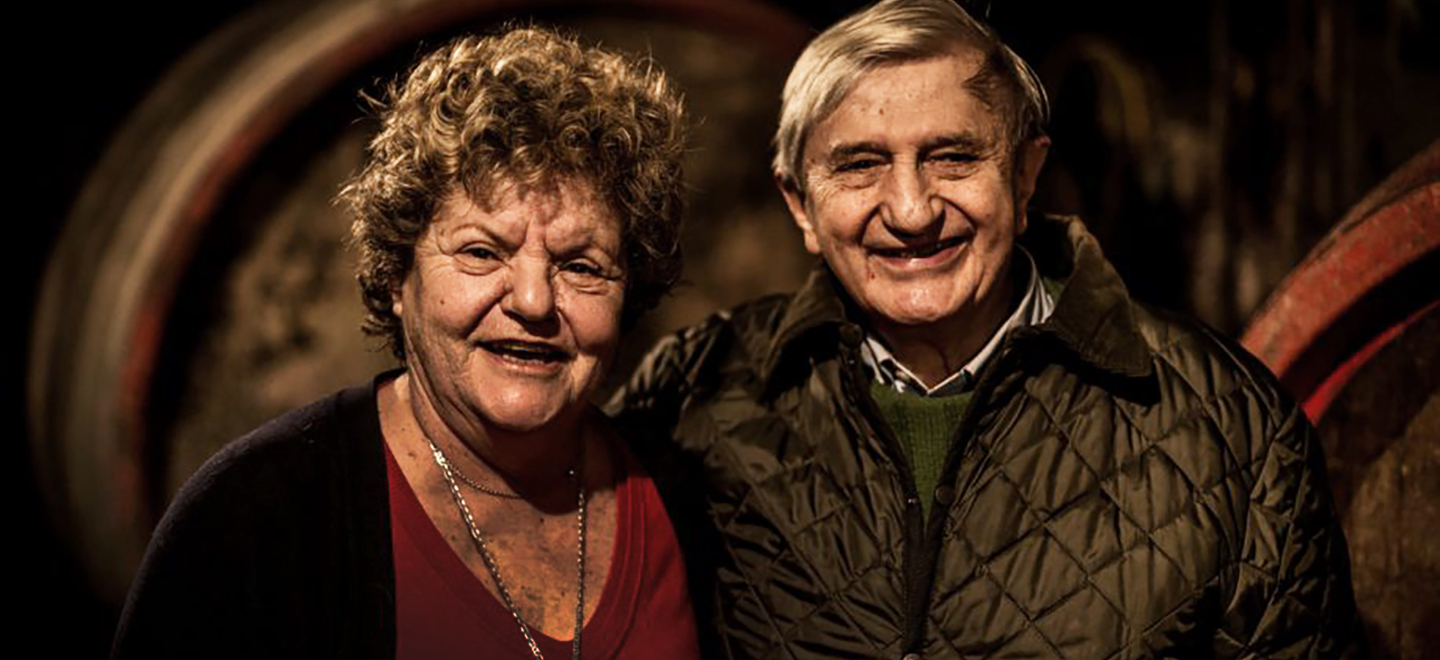 Region:
Region: -
Description:
Domaine Eden is a nearby mountaintop wine estate purchased by Mount Eden Vineyards in 2007. It was founded and built by the late Tom Mudd in 1983, and was initially planted with the Mount Eden clonal selections of Chardonnay and Cabernet Sauvignon, which evolved to include Pinot Noir from various Dijon and California selections. The viticulture at Domaine Eden is approached with the same level of naturalness and sustainability as Mount Eden’s estate vineyards. The soils here, however, are different from the estate’s Franciscan shale so even though Domaine Eden is a mere mile away “as the crow flies”, the wines express more varietal fruit with expansive mid-palate flavors than the soil-driven minerality of Mount Eden estate wines. With the differences in vineyard character, the property inspired a new wine brand, Domaine Eden, which focuses on Pinot Noir and Chardonnay from this special site and Bordeaux varieties from Mount Eden’s larger home, the Santa Cruz Mountains.
See Also: Mount Eden Vineyards
Image: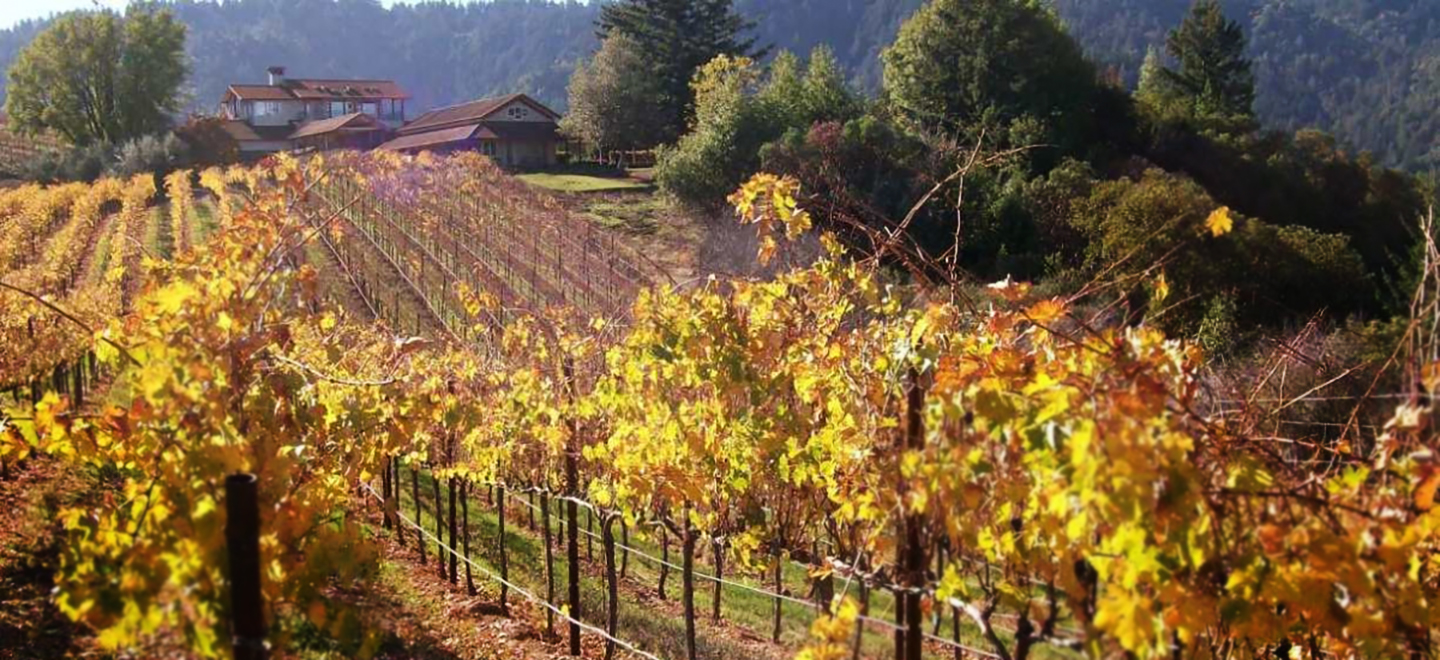 Region:
Region: -
Description:
Thank you to importer Louis/Dressner for this profile of the Girard estate:
Domaine Fernand Girard is currently run by Alain Girard. He comes from several generations of winemakers in the tiny village of Chaudoux, located a few miles northwest of the town of Sancerre and directly north of the famous town of Chavignol.
He tends 14 hectares of vines in total, sells some cuvées to négociants and bottles only a portion of the total production under his family name. The "La Garenne" cuvée originally came from a 2.5 hectare vineyard of that name, a plot on a steep east-facing slope with a very rocky limestone soil. The chalky soil brings out the characteristic flinty, mineral and green notes of Sauvignon Blanc. On La Garenne’s well-drained, warm slopes, the grapes achieve exceptional ripeness and fruit.
Over the years, as demand increased, it became clear that Alain would need to blend his sites together to produce more estate wine. Today, only one wine is produced in much larger quantities than when we started working together in the early 1990's. In a crass move of commercialism, it was agreed to keep the name "La Garenne" since it was a "recognizable brand".
Compared to those in other viticultural regions in France, most of Sancerre’s vignerons have stricter than usual standards of cellar tidiness and hygiene. It might be the influence of the local goat cheese making, which was traditionally done on a very small, artisanal scale, by people who knew the importance of a pristine environment.
The Girards have an impeccable cuverie and vinify with modern technology: a pneumatic press, stainless-steel vats, a temperature control system during fermentation, and an air-conditioned space for aging in vats and stocking bottles. They counterbalance technology by practicing old-fashioned vineyard work, where herbicides and treatments are used sparingly, and by never adding commercial yeasts to induce fermentation or add flavors.
Their Sancerre is everything one hopes for when thinking about the region: it is bright, lively, pleasantly aromatic, has zippy acidity but low astringency. It is a wonderful food wine that is as versatile as it is easy to drink.
Image: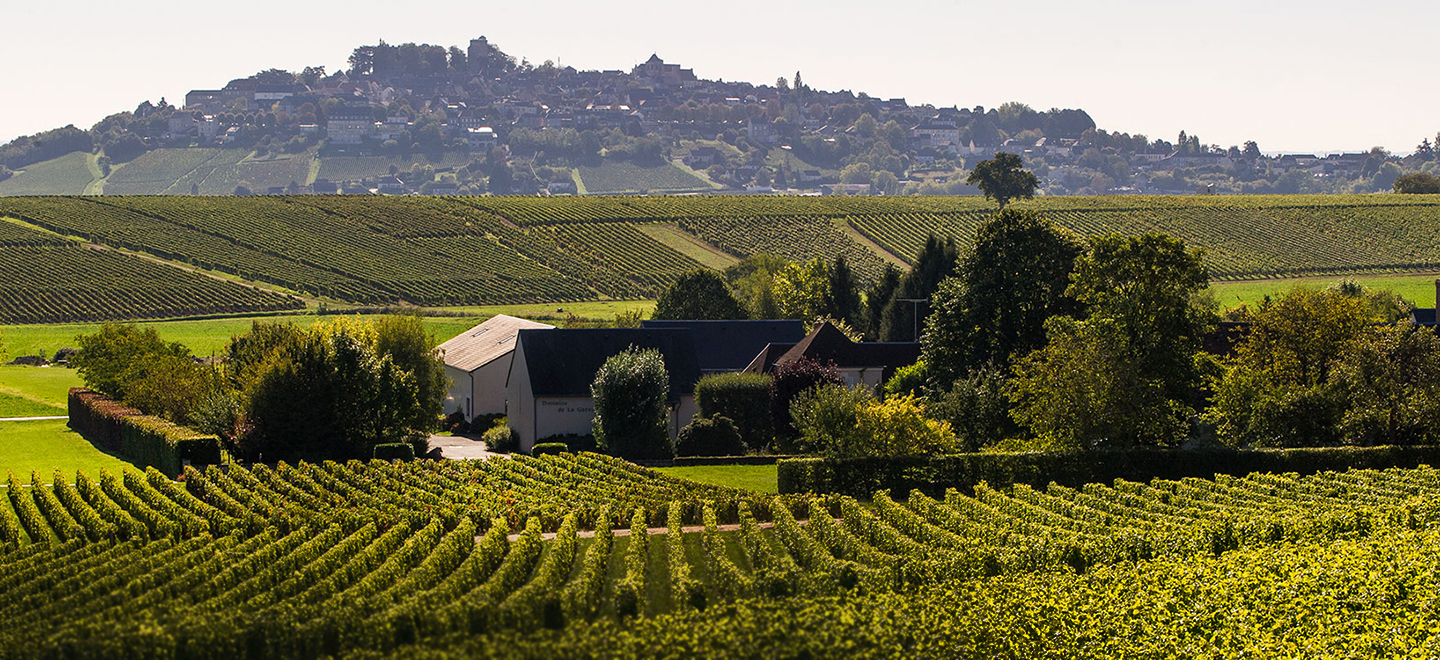 Region:
Region: -
Description:
Domaine la Barroche is a family estate that has been passed down from one generation to the next since the 14th century and it is now managed by sister and brother team, Laetitia and Julien Barrot. Their father, Christian Barrot, is passionate about viticulture and has taken meticulous care of the family’s 12.5 hectare of vines since the early 1970’s. Until Julien joined his father back in 2002, all of the wine had been sold in bulk to negociants. Now, half of the Grenache vines are more than 100 years-old and are some of the oldest found in Châteauneuf-du-Pape. Julien has moved to completely organic viticulture (not certified) and his father is still following his passion and continues to work in the vineyards. Taking all of his father’s work to the next level, Julien is now vinifying each grape variety and some parcels separately, studying and learning his holdings parcel by parcel. According to Julien, “You cannot make a great wine without a great terroir, and a great terroir is nothing without the winemakers love for his vines.”
The vineyards are mainly in the north/north-east sector of Châteauneuf-du-Pape. Each parcel has a unique terroir, but overall, what is notable is that their vineyards have a high proportion of sand giving the wines elegance and finesse. Because the family has been in Chateaneuf for such a long time, they have vines in the top parcels and the vines are quite old, averaging 65 years-old. Fine sand in Grand Pierre (next to Rayas) produces elegant and velvety Grenache from vines planted around 1900. From Grand Pierre one foudre of “Pure” is made per year. Fifty-year old Cinsault grows in Les Cerises with golden galets stones and produces a full-bodied and powerful wine. Grenache vines average forty years old in Pied-Long and Cabrières with a sandy, marl soil with some clay. There is another parcel of 100 year-old vines in Terres Blanches with a sandy, clay soil mixed with stones. There are also two more parcels of centenary vines in Palestor and Cabrières.
The Barrot's invested in a new winery, boasting beautiful tulip shaped cement (similar to the tanks used at Cheval Blanc) and were able to begin using it for the 2015 harvest. It's gravity-fed, like the old winery from 1930, just with much more space. The wines go through a four to five week pre-fermentation cold-soak maceration in the cement tulips. Pumping-over takes place for a gentle extraction. Ripe stems are kept and the amount varies from year to year. Natural yeast found on the grapes starts fermentation. The wine is moved from one vat to another by gravity without pumping or racking. Aging takes place over 18 months: in old oak foudres for the Grenache, one to three year-old barrels on the Mourvèdre and Syrah (aged on the lies) and stainless steel on the Cinsault. The wines are bottled unfiltered.
Given the exceptional age of the vineyards, Barroche does not bottle a typical entry-level "Classic" Châteauneuf-du-Pape. The flagship of the winery is a prestige cuvée, Châteauneuf-du-Pape “Barrot”. The vines average 65 years-old, from a mostly sandy soil, fermented and aged in cement tulips, large foudres, and demi-muids. They make a small amount of Châteauneuf-du-Pape “Pure” from centenary Grenache vines. In exceptional year, they will bottle a Châteauneuf-du-Pape called "Finacée" which is a blend of old-vine Mourvedre with young Syrah. In 2015, the Barrot's found a special vineyard east of Avignon; the vines are nearly 100 years-old and the soil is similar to "La Crau" in Châteauneuf. The wine is classified as Vin de France and called "Liberty". Dunnuck describes the 'Liberty' as tasting, "like a Châteauneuf du Pape with its juicy black raspberry, violets, peppery herbs and distinct minerality. This comparison is certainly still valid on the palate, as well and its medium to full-bodied, concentrated and structured, with a sappy, grippy style that will evolve nicely for 7-8 years or more. Don’t let the Vin de France label sway you, this is the real deal." And in 2016, Barroche made it's first white wine, also called "Pure" Châteauneuf-du-Pape Blanc. It's 100% Clairette from the "Pialons" vineyard, which has very fine sand of marine origin. It's also iron-rich with an outstanding subsoil supplying the vines with water and nutrients. The vineyard's unique geology is conducive to a range of extremely refined aromas in the wine, as well as an elegant, silky mouth feel accompanied by a great deal of freshness.
Over the years, Barroche has refined their style working to emphasize finesse over power. The wines from Châteauneuf-du-Pape are notoriously powerful and it's exciting to see the progress made each year by the Barrot brother and sister team.
Image: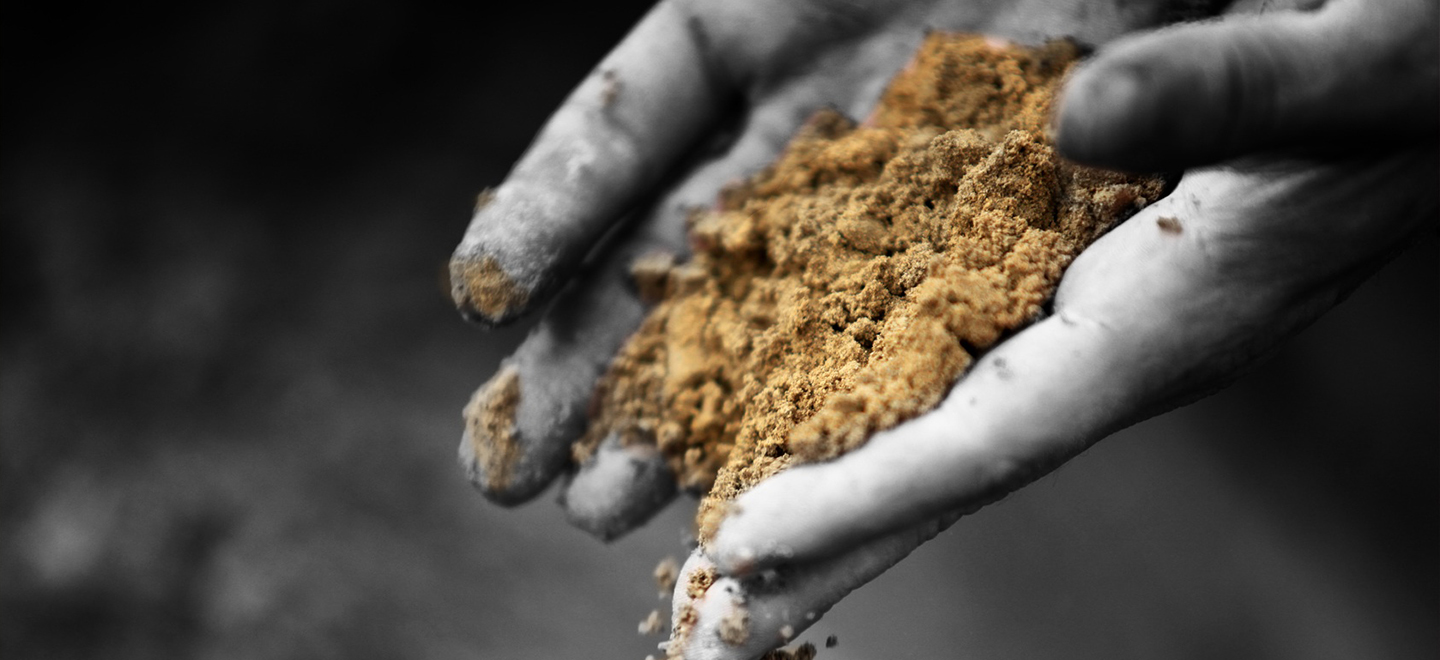 Region:
Region: -
Description:
Domaine Pélaquié is a family-run estate with a long history; the estate has been passed down father to son for generations, cultivating the same land all the way back to the 16th century! The current son in charge, Luc Pélaquié, has modernized the winery, all the while protecting the traditions of his ancestors. He practices sustainable viticulture, certified by HVE, on his 100 hectares of vines located in the Côtes-du-Rhône, Laudun, Tavel, and Lirac.
The terroir of Laudun wines distinguishes them from other southern Rhône appellations. The wines from this side of the river typically have higher acidity, with soils made lighter by sand mixed with clay and limestone. This contributes a floral elegance to the wines that is quite unusual in the region. The sandy soils and cooler microclimate are also extremely important for the cultivation of the Syrah and Viognier varieties which produce their finest wines in the cooler regions of the northern Rhône (50-70 miles to the north) in sandy, clay soils.
Luc loves rich and round whites and makes them brilliantly. To accomplish whites to his satisfaction, he harvests late in October giving his whites an intense yet fresh nose and a long finish.
BOWLER E-Zine Issue 4 | January 2022: HVE – Qu’est-ce que c’est?
Image: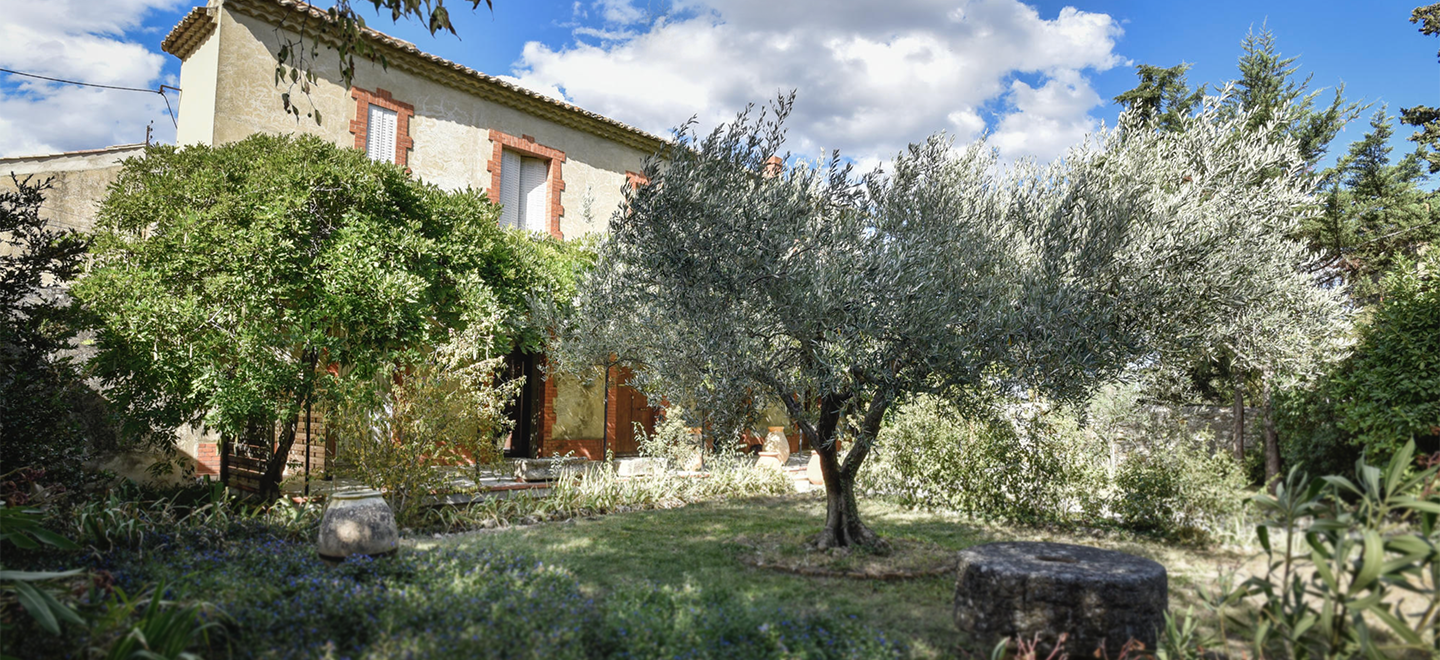 Region:
Region: